Courtesy: www.gltjp.com (crowded Takeshita Street)
Courtesy: @briiansstagram ("Red Gate of Peace" (Heiwa no torii)
Discover the serenity of Hakone's iconic Red Gate of Peace, a symbol of tranquility and a gateway to natural beauty. This striking vermilion torii gate, nestled amidst lush greenery and overlooking Lake Ashi, is not only a visual masterpiece but also a cultural treasure.
As you embark on our Hakone Tour, you'll have the opportunity to explore this enchanting site and immerse yourself in the spiritual essence it exudes. Whether you're a nature enthusiast, a history buff, or simply seeking a peaceful escape, our guided tour ensures an enriching experience you won't want to miss.
Book your spot now for a journey into Hakone's timeless charm.
Do you have any enquiries regarding our Tours? You can fill in the form below to reach us:
Credit: Japan Wonder Travel Blog (inside the bullet train “shinkansen”)
When planning a Japan tour, one aspect that shouldn't be overlooked is your journey itself. Japan's famous Shinkansen, or bullet train, is a remarkable way to explore the country efficiently. To make the most of your Japan tour, it's essential to understand the different seats and ticket types available on the Shinkansen. Choosing the right Shinkansen seat can significantly enhance your experience.
1. Ordinary Class: Reserved Seats | Unreserved Seats (non-reserved)
2. Green Car (First Class): Reserved Seats | Unreserved Seats (non-reserved)
3. GranClass (Luxury Class)
4. Special Seats
5. Child and Youth Discounts
6. Japan Rail Pass
ORDINARY CLASS
RESERVED SEATS: These are regular seats that you can reserve in advance. They offer comfortable seating and are the most common choice for travelers. You can select window or aisle seats based on availability.
UNRESERVED SEATS (Non-reserved): For those who value flexibility or might decide to take an impromptu tour of Tokyo, unreserved seats are a great option. While these seats may be more budget-friendly, they can fill up quickly, especially during peak hours, so plan accordingly.
Courtesy: Japan Travel (Ordinary Seat)
2. GREEN CAR (FIRST CLASS)
RESERVED SEATS: Upgrade your Tokyo tour experience by choosing Green Car seats. These first-class seats provide extra space, plush seating, and a peaceful environment. Perfect for those looking to relax and rejuvenate between tours.
UNRESERVED SEATS (Non-reserved): If you prefer the luxury of the Green Car but also want the flexibility of unreserved seating, consider an unreserved Green Car ticket. You'll have access to any available unreserved Green Car seat during your journey.
Courtesy: Pinterest (Green Car / First Class seat)
3. GRANCLASS (LUXURY CLASS)
RESERVED SEATS ONLY: For an extraordinary Tokyo tour experience, GranClass offers the utmost in luxury. With spacious and ultra-comfortable seats, gourmet dining, and exclusive lounges at the stations, it's the epitome of Shinkansen travel. Please note that this premium class is available on select Shinkansen lines.
4. SPECIAL SEATS
Some Shinkansen lines offer special seat options, such as "Window Seats" for the best views or "Solo Seats" for privacy. These unique seats can be found in both Ordinary and Green Car classes, enhancing the experience of your Tokyo tour.
5. CHILD AND YOUTH DISCOUNT
If you're touring Japan with family, check for child and youth discounts. These discounts are typically available for young travelers aged 6 to 11 and sometimes extend to young adults aged 12 to 25. It's a great way to save while touring Japan's attractions.
Courtesy: The Tokyo Chapter (Children in the window seat of Ordinary Class)
6. JAPAN RAIL PASS
Foreign tourists embarking on a Japan tour can consider the Japan Rail Pass. It provides unlimited travel on JR trains, including Shinkansen, in the Ordinary Class. Keep in mind that the Japan Rail Pass doesn't cover GranClass or certain premium services.
Courtesy: The Navigatio (The JR Pass)
Selecting the right Shinkansen seat and ticket class can make your Japan tour even more memorable.
Whether you're chasing adventure or seeking a luxurious journey, the Shinkansen accommodates a range of traveler preferences and budgets. When booking your Shinkansen ticket, consider your needs, whether it's the desire for flexibility, extra comfort, or an unforgettable luxury experience. Regardless of your choice, a ride on the Shinkansen promises speed, efficiency, and breathtaking views of Japan's picturesque landscapes. Enjoy your Tokyo tour to the fullest by making informed choices about your Shinkansen journey.
Do you have any inquiries? Fill out the form below to reach us.
Photo: robin inizan (Inside the Shinkansen with a view of Mt. Fuji)
When it comes to efficient and exciting travel experiences, Japan's Shinkansen, also known as the bullet train, takes the top spot. This high-speed rail network offers a remarkable way to explore Japan, and one of the most thrilling starting points for your adventure is Tokyo. In this blog, we'll delve into how you can combine Tokyo tours with the Shinkansen experience, from walking tours to food tours, to make the most of your visit to this vibrant metropolis with a little background of the Shinkansen.
Brief History | Inaugural Year | Engineer Behind the Shinkansen | Technological Advancements | Expansion | Speed and Efficiency | Global Influence |
Exploring Tokyo with Tokyo Tours | Walking Tours | Food Tours |
Travel Tips
BRIEF HISTORY
INAUGURAL YEAR
The Shinkansen made its debut on October 1, 1964, just in time for the Tokyo Olympics. The first line, called the Tōkaidō Shinkansen, connected Tokyo and Osaka. This inaugural route is now part of the Tokaido Shinkansen Line, which is still in operation today. The Shinkansen revolutionized transportation in Japan and set new global standards for high-speed rail travel.
Photo: Phys.org (Oct. 1, 1964 photo, a ceremony held to mark the launch of Japan's Shinkansen, between Tokyo and Osaka, at Tokyo Station in Tokyo.)
ENGINEER BEHIND THE SHINKANSEN
The Shinkansen was the brainchild of engineer Hideo Shima, who led the project. His vision was to create a safe, efficient, and high-speed rail system for Japan.
Photo: Ben Gross (Hideo Shima (1901-1998))
TECHNOLOGICAL ADVANCEMENTS
The Shinkansen introduced several technological innovations at the time, including dedicated high-speed tracks, aerodynamic train designs, and advanced safety features. It set the standard for high-speed rail systems around the world.
EXPANSION
Since its inception, the Shinkansen network has expanded to cover various regions of Japan, connecting major cities such as Kyoto, Nagoya, Hiroshima, and Fukuoka. Different lines have been added, including the Tohoku, Joetsu, and Kyushu Shinkansen, extending the network across the country.
Photo: Onigiro Pocket Japan (Travel times and Shinkansen Map)
SPEED AND EFFICIENCY
One of the key features of the Shinkansen is its impressive speed. It initially operated at a top speed of 210 km/h (130 mph) but was later upgraded to reach even higher speeds. Today, some Shinkansen lines operate at speeds exceeding 300 km/h (186 mph) and even . The system is known for its punctuality and reliability.
GLOBAL INFLUENCE
The success of the Shinkansen in Japan inspired the development of high-speed rail systems in other countries, including France, Germany, and China. It played a pivotal role in advancing rail transportation technology worldwide.
Photo: hdvideoridha (Shinkansen or Bullet Train of Japan)
Exploring Tokyo with Tokyo Tours
One of the best ways to experience Tokyo's rich history, modern culture, and delectable cuisine is through guided tours. Here are some Tokyo tour options that perfectly complement your Shinkansen adventure:
Walking Tours: Tokyo is a city of contrasts, where ancient shrines stand alongside futuristic skyscrapers. Join a walking tour to explore neighborhoods like Asakusa, Harajuku, and Shibuya, and take in the sights, sounds, and flavors of Tokyo on foot. Don't forget to snap a photo at the iconic Shibuya Crossing!
2. Food Tours: Japanese cuisine is a culinary delight, and Tokyo is a food lover's paradise. A food tour in the city will introduce you to the wonders of Wagashi, Fruit Sando, Grilled Chicken, Curry udon, and much more. From street food stalls to Izakayas, you'll embark on a gastronomic journey like no other.
TRAVEL TIPS
1. To make the most of your Shinkansen journey, consider purchasing a Japan Rail Pass, which provides unlimited travel on JR trains and Shinkansen for a set number of days.
2. Plan your tours and Shinkansen reservations in advance to ensure availability and a hassle-free experience.
3. Be punctual, as the Shinkansen runs on a tight schedule.
Tokyo, with its rich blend of tradition and innovation, is a perfect starting point for exploring Japan via the Shinkansen. By combining Tokyo tours like walking and food tours with high-speed rail travel, you'll have an unforgettable experience, discovering the heart of Japan, one exciting destination at a time.
So hop on a Shinkansen, and let the adventure begin!
Do you have any questions regarding our tour? You can reach us by filling out the form.
Photo: Diana Lisunova (Fallen leaves)
When it comes to experiencing the rich tapestry of Japanese culture, there's no better way than embarking on a Tokyo food tour during the autumn season. Japan's fall foliage, known as "koyo," creates a breathtaking backdrop for exploring the diverse and delicious world of Japanese cuisine. In this blog, we'll introduce you to five famous autumn food you can savor during your Tokyo Tours, whether you're on a dedicated food tour or a leisurely walking tour.
Five famous autumn food:
MOMIJI TEMPURA
Autumn is the season of vibrant red and orange maple leaves, and one way to enjoy this natural spectacle is by indulging in momiji tempura. In this delicacy, vibrant maple leaves are battered and deep-fried, creating a crispy yet delicate snack. You can find momiji tempura at street vendors throughout Tokyo, making it a perfect on-the-go treat during your walking tour. The contrast between the crispy exterior and the tender maple leaf inside is a true taste of autumn.
Photo: Tokidoki Yuki: (Hand holding a one piece Momiji Tempura)
2. MATSUTAKE MUSHROOMS
Matsutake mushrooms are a coveted autumn delicacy in Japan, known for their exquisite flavor and aroma. These mushrooms are often incorporated into various dishes, such as sukiyaki or rice-based dishes like takikomi gohan. On a food tour, you'll have the opportunity to taste these fragrant mushrooms prepared in various ways, showcasing the diversity of Japanese cuisine. It’s originally from Japan but matsutake mushrooms (tricholoma matsutake) can also grow wild in Korea and China. The name “matsutake” means “pine mushroom” in Japanese after the pine forests where these fungi grow.
Photo: Arad Branding ( Plated Matsutake Mushrooms)
3. SANMA (PACIFIC SAURY)
Sanma, or Pacific saury, is a seasonal fish that's at its best during the autumn months. Grilled sanma is a favorite dish among locals and tourists alike. The crispy skin and succulent flesh of this fish make it a must-try during your Tokyo tour. You can enjoy it at local izakayas or street-side stalls that come alive during this season.
Photo: Wa-Shoku (Plated Grilled Sanma (Pacific Saury)
4. YAKI-IMO (ROASTED SWEET POTATOES):
Autumn wouldn't be complete without the comforting aroma of yaki-imo wafting through the air. These roasted sweet potatoes are a beloved autumn snack in Japan. Vendors often roast them in a wood-burning oven on a cart, creating a delightful and nostalgic experience. Grab a yaki-imo on your walking tour and savor the natural sweetness of Japanese sweet potatoes.
Photo: Arigato travel (Roasted Sweet Potatoes (Yaki-Imo))
5. KURI (CHESTNUTS)
Chestnuts, or kuri, are a quintessential autumn ingredient in Japan. They find their way into a variety of dishes, from traditional sweets like mont blanc cakes to savory dishes like chestnut rice. During your food tour, keep an eye out for dishes featuring kuri, as it's a true taste of the season.
Photo: Seiya Maeda (Kuri (Chestnuts))
Embarking on a Tokyo food tour or a leisurely walking tour during autumn allows you to immerse yourself in Japan's rich culinary traditions while enjoying the breathtaking beauty of fall foliage. From momiji tempura to matsutake mushrooms, sanma, yaki-imo, and kuri, there's no shortage of autumn-inspired dishes to tantalize your taste buds. So, don't miss the opportunity to savor these famous autumn foods in Japan as you explore Tokyo's vibrant streets and culinary treasures. Your taste buds will thank you for the unforgettable experience!
Photo credit: @shibuya_scramble_square (a view of the Shibuya Scramble Square Building)
If you plan on taking a Tokyo Tour, Shibuya Sky located on top of the Shibuya Scramble Square is a must visit!
The best time to visit the Shibuya Sky in Japan can vary depending on your preferences and what you want to experience.
Here are some considerations for different times of day:
Bonus point: Mt. Fuji visibility from Shibuya Sky at Scramble Square
MORNING:
If you want to see the famous Shibuya Scramble Crossing with fewer crowds and a quieter atmosphere, consider visiting in the early morning, especially on weekdays. This is also a good time for photography, as you can capture the crossing without as many people in the frame.
Photo credit: Kazuo ota (view from the Shibuya Sky at Shibuya Scramble Square)
2. AFTERNOON
Shibuya Scramble Square houses a shopping complex, so having a tour in the afternoon allows you to explore the pop-ups, shops, restaurants, and entertainment options within the building.
Business hours:
Shops: 10:00AM - 9:00PM
Restaurants: 11:00AM - 11:00PM
*Depending on some stores*
For more information and upcoming events, visit: https://www.shibuya-scramble-square.com/shops_restaurants/index.html?category=shop
@shibuya_scramble_square: Moheji
@shibuya_scramble_square: Aoyama Flower Market
@shibuya_scramble_square: Stride by JOHNBULL
3. EVENING:
The Shibuya Crossing comes alive with vibrant neon lights and a bustling atmosphere in the evening. This is when you can witness the crossing at its busiest at the Shibuya Sky Observation Deck. It's also an excellent time for people-watching and soaking in the energetic atmosphere.
Photo credit: @jetjetdelacruz (Evening view from Shibuya Sky at Shibuya Scramble Square)
Photo credit:@shibuya_sky (Evening at Sky Stage of the Shibuya Sky)
4. NIGHT:
If you enjoy nighttime cityscape views, this time is best for you. You'll get a stunning panoramic view of Tokyo illuminated by city lights. After the sun has set, they have a special light show called “Crossing Light” where 18 beams illuminate the city sky. Nighttime visits can be more romantic and scenic.



5. WEEKENDS AND HOLIDAYS AND SPECIAL EVENTS:
Keep in mind that weekends and Japanese holidays tend to be busier than weekdays. If you visit Shibuya Sky on these days, the whole area of Shibuya will be busier than normal. Experiencing it at its most chaotic and lively, visiting during these times can be a unique experience.
Photo credit:@shibuya_sky (Performance of the “Fury in the Sky” in the SKY STAGE)
MT. FUJI VISIBILITY IN SHIBUYA SCRAMBLE SQUARE
While Shibuya Scramble Square offers fantastic panoramic views of Tokyo, including the Shibuya district and its surrounding areas, it's not typically known for providing a clear view of Mount Fuji. Mount Fuji is located quite a distance from Shibuya, approximately 100 kilometers (62 miles) southwest of Tokyo.
The visibility of Mount Fuji from Shibuya Scramble Square largely depends on the weather conditions and atmospheric clarity on the day of your visit. On exceptionally clear and sunny days, it may be possible to catch a glimpse of Mount Fuji in the distance.
If seeing Mount Fuji is a priority for your visit to Tokyo, it's generally recommended to travel closer to the mountain itself, such as to locations like the Fuji Five Lakes region or Hakone, which offer better opportunities for viewing Mount Fuji's iconic silhouette, especially on clear days. You can check out: https://hellotokyotours.com/private-hakone-tour for a Private Hakone Tour.
Two photos taken in the same location on two different Private Customised Tours. On a clear day (left photo), our guests could see Mout Fuji. On a cloudy / hazy day (right photo) our guests could not see Mount Fuji.
BUSINESS HOURS:
Shibuya Square Scramble: 10:00AM - 9:00PM
Shibuya Sky: 10:00AM - 10:30AM
Final admission: 9:20PM
Note: Business hours may change.
Tickets for Shibuya Sky can be added on to our Private Customised Tours and a visit will be included in your tour.
As an operator of a bustling tour business in Tokyo, my life is usually a whirlwind of city lights and bustling activities. However, June granted me a rare respite and a reason to escape. With my family in tow, we embarked on a 3-night getaway to Ito, Japan, celebrating my birthday, my husband Ichi's birthday, and our daughter Emilia's six-month milestone. Our chosen refuge was the Laforet Itoonsen Yunoniwa hotel, offering a serene contrast to our lifestyle running Hello! Tokyo tours.
Relaxation in Luxury
Laforet Itoonsen Yunoniwa welcomed us with warm hospitality and our room came with a private onsen, adding an extra touch of luxury to our stay.
Onsen Experiences
Our stay at the hotel offered various onsen experiences. Other than the private bath in our room the other standout was the private family onsen, allowing us to enjoy a peaceful soak as a family. With Emilia gleefully splashing in the water and giggling it was a very special moment. The indoor and outdoor onsens in the tranquil Japanese garden were also relaxing.
Culinary Delights
Dining at Laforet Itoonsen Yunoniwa was a highlight. Each evening, we savored multi-course meals highlighting local ingredients. The private dining room that we were given for all meals added a personal touch to our experience, a thoughtful gesture that recognized the presence of our young child. This is a real family-friendly hotel!
Beachside Bliss
We took advantage of our trip coinciding with our birthdays and Emilia's milestone. On my birthday, we enjoyed swimming in the ocean, a simple refreshing pleasure that was another highlight which brought a sense of connection with nature.
Exploring Quaint Towns and Coastal Beauty
One of the highlights of our Ito retreat was our exploration of the charming small towns in the area. We ventured into local markets, discovering treasures like preserved fish, fermented squid, and homemade sweets. The pickles we sampled during dinner at the hotel's restaurant left such an impression that I couldn't resist bringing a jar home. Beyond the quaint shops, we were captivated by the rugged beauty of the coastline, it is a truly stunning area.
Unforgettable Getaway
Our Ito escape offered a mix of relaxation and bonding. The onsen experiences eased stress, the culinary journey delighted our palates, and the shared moments strengthened our family bonds. Laforet Itoonsen Yunoniwa provided a luxurious backdrop to a very memorable family trip. We will be back!
Visiting Asakusa on a Tokyo tour is a great way to get itroduced to this massive city
Asakusa, a district that embodies the essence of Tokyo's traditional charm and modern vibrancy. This historical neighborhood is a must-visit for any tourist seeking to immerse themselves in the rich culture and heritage of Japan. Join us on a Tokyo Tour through some of the most captivating attractions in Asakusa, and discover why it is an integral part of every Tokyo tour.
Culture Tourist Information Center
Before heading into the entire area, start off at the Culture Tourist Information Center. This allows for a panoramic view of Asakusa and beyond, located near Sensoji Temple. This architectural gem boasts a sleek and modern design, offering visitors an excellent vantage point from its free observation deck. Capture breathtaking snapshots of the Tokyo Skytree, the Sumida River, and the traditional rooftops of Asakusa. The center also provides useful information about Asakusa's history, culture, and upcoming events, making it an ideal starting point for your Tokyo tour.
Exterior of the Asakusa Culture Tourist Information Center
Nakamise Street
After the Tourist Information Center you’ll be greeted by Nakamise Street that leads up to Sensoji Temple. As you stroll through Nakamise Street, you'll be transported back in time to the Edo period. The lively atmosphere, with merchants enthusiastically promoting their wares, will make you feel like a participant in Japan's historical marketplace. This bustling shopping street offers a delightful array of traditional Japanese goods, from exquisite handicrafts and kimono fabrics to mouthwatering snacks and sweets. Don't forget to try popular treats like ningyo-yaki (doll-shaped cakes) and senbei (rice crackers) to satisfy your taste buds.
Nakamise Street
Sensoji Temple
A must-visit is the iconic Sensoji Temple, the oldest and most significant Buddhist temple in Tokyo. As you enter the majestic Kaminarimon Gate, flanked by imposing red lanterns, you'll immediately feel a sense of reverence and tranquility. Follow Nakamise Street, a bustling shopping street dating back centuries, lined with traditional souvenir shops and delectable street food stalls. Embrace the spiritual atmosphere as you approach the temple's main hall, where you can partake in rituals like cleansing at the chozuya and offering prayers for good fortune.
Asakusa River Cruise
To add an extra touch of enchantment to your exploration, embark on an Asakusa River Cruise along the serene Sumida River. Board a small river cruise boat and let the city's skyline glide by gracefully. Feel the gentle breeze as you pass iconic landmarks such as the Tokyo Skytree and the Asahi Beer Tower, all while being accompanied by traditional Japanese melodies and perhaps even some onboard entertainment. The river cruise is an unforgettable experience that offers a unique perspective on Tokyo's modernity and ancient charm. It’ll lead you to the Hamarikyu Garden, one of Tokyo’s most iconic gardens!
Asakusa encapsulates the beauty of Tokyo's seamless blend of old and new, where ancient traditions coexist harmoniously with contemporary urban life. From the spiritual allure of Sensoji Temple and the lively Nakamise Street to the modern vistas at the Culture Tourist Information Center and the serene river cruise, Asakusa offers a complete Tokyo tour experience that will leave you with lasting memories and a profound appreciation for Japan's captivating culture.
Whether you're a history enthusiast, a food lover, or simply seeking an authentic Japanese encounter, Asakusa should undoubtedly find a place on your Tokyo tour itinerary. So, come along and let Asakusa weave its magic on you as you discover the heart and soul of Tokyo's cultural heritage.
Our Tokyo Food Tour
Our Tokyo food tour: A Journey Through Time Through Food is one of our most popular food tours in Tokyo. We visit 3 geographical districts. One for the past, one for the present, and one for the future.
Starting in the past, we explore the Nihonbashi district, a non-touristy highlight, and arguably our most popular district. Here, we learn about the foundations of Japanese food and learn about foods that have been around for hundreds of years. We even get to visit some local shops that have been generationally owned!
Then, we head into the present day around the Yurakucho and Tokyo Station area. Here we learn about what modern eating and drinking is like. We learn about the gift-giving culture through food and explore how modern salarymen drink!
Finally, in the Akihabara district, or the future foods, we learn about fusion foods, and how food is changing to target younger people.
Connect with us on IG and FB!
The view from the Shibuya Sky Escalator at Night
Tokyo is the biggest city in the world. Naturally, it hosts some of the best street photography in the world as well. But, choosing where to get your best shot can become daunting when you’re trying to find the perfect spot in the biggest city. On our Tokyo tours, you can as your Tokyo tour guide to bring you to some of the best spots for photography in Tokyo.
3 spots for Photography on a Tokyo Tour - Table of Contents
1. Shibuya
Featured in movies such as Lost in Translation and The Fast and Furious: Tokyo Drift, Shibuya naturally makes it to the top of our list. Whenever you see the neon lights or crowded bustling streets of Tokyo, it is almost always a picture of Shibuya. But where in Shibuya can you get the best pictures?
Shibuya Sky Observation
Shibuya Magnet Rooftop (free)
Shibuya Station Bridge to Mark City (free)
All these locations are great places to get a snapshot of the world-famous Shibuya Crossing. Make sure to ask our Tokyo tour guides in advance to reserve a ticket for the Shibuya Sky Observation Deck. Because of its popularity, it is almost impossible to get same day tickets!
The view from Shibuya Magnet
The view from the Shibuya Sky observation deck at night
2. Omotesando
Not only is this for street photographers, but architecture enthusiasts love Omotesando. Omotesando is known for their concentration of luxury brands lined up on one street. But, they compete against each other not just by their brand but also by their architecture. You can take a look at some of the best spots here.
Kaleidescope escalators in the Tokyu Plaza in Omotesando
3. Asakusa
Asakusa is the heart of the traditional side of Tokyo. Hosting the oldest temple in Tokyo Tour - Sensoji - this place is a guarantee that you’ll snap a couple cool shots. You can ask your Tokyo tour guide to take you to the Asakusa Culture Tourist Information center for a “lesser known” observation deck for a nice view of the temple.
Nakamise Dori leading up to Sensoji Temple
Interested in getting a self-guided audio tour? Make sure to download Voice Map! Contact us below!
Interested in a Hello! Tokyo Tour? Contact us!
Connect with us for fun content!




Akihabara is a colorful, energetic, and vibrant neighborhood of Tokyo
Akihabara, known as Tokyo's electronic and otaku paradise, is a vibrant district that pulsates with energy and innovation. This bustling neighborhood is a haven for anime, manga, gaming, and tech enthusiasts from around the world. As you step onto the streets of Akihabara, you're immediately greeted by a kaleidoscope of neon signs, towering billboards, and stores overflowing with the latest gadgets and electronics. From multi-story arcades packed with cutting-edge games to sprawling manga stores offering an endless selection of titles, Akihabara caters to every geek's passion. The district's charm lies not only in its shops but also in its lively cosplay culture, where you can spot dedicated fans dressed as their favorite characters. Akihabara truly embodies the convergence of traditional Japanese culture and the futuristic realm of technology, making it an unmissable destination for any pop culture enthusiast. Out of the hundreds of shops in Akihabara, here are 4 must-visit shops in Akihabara, recommended by a Tokyo tour guide.
Top 4 shops in Akihabara - Table of Contents
1. Gigo Gaming Arcade
The GiGO gaming arcades have multiple shops throughout Akihabara. A simple Google search will direct you to one of their shops. GiGO gaming is filled with arcade games. They are most famously known for their crane games filled with giant plush toys and rare anime/gaming items. Go to the GiGO Akihabara 5 where you will find some delicious Taiyaki in the shapes of different animes.
Guests on our small group food tour enjoying Taiyaki at Gigo gaming arcade
2. Yellow Submarine
If you enjoy board games then Yellow Submarine is the place for you. They have an abundance of almost all the board games you can think of. This includes board games made by amateurs, exclusive works, and international board games. They even have a section where you can rent some some of their board games and sit at a table to play them with your friends!
3. Dragon Star
Whether you are a trading card enthusiast or not, Dragon Star is a unique shop where you can find Pokemon cards that are well over 200,000 Yen (roughly 2500 USD)! If you own any trading cards yourself, you might have the chance to sell your cards to the shop too.
Copy and paste this address into your maps to get to Dragon Star.
〒101-0021 Tokyo, Chiyoda City, Sotokanda, 1 Chome−18−18, Bito Akiba Plaza, 6F
4. Super Potato
Super Potato in Akihabara is a legendary retro gaming store that transports visitors back to the golden age of video games. Situated in the heart of Tokyo's bustling electronics district, Super Potato is a mecca for gaming enthusiasts seeking nostalgic treasures. The store's shelves are lined with a vast collection of vintage consoles, cartridges, and accessories from various eras, providing a nostalgic trip down memory lane. Whether you're looking for a rare find or simply want to relive the classics, Super Potato's friendly and knowledgeable staff are ready to assist. Stepping into Super Potato is like entering a time capsule of gaming history, making it an essential stop for gaming enthusiasts visiting Akihabara.
A massive wooden sculpture inside the Mitsukoshi Department Store - one of the stops.
Interested in getting a self-guided audio tour? Make sure to download Voice Map! Contact us below!
Interested in a Hello! Tokyo Tour? Contact us!
Connect with us for fun content!











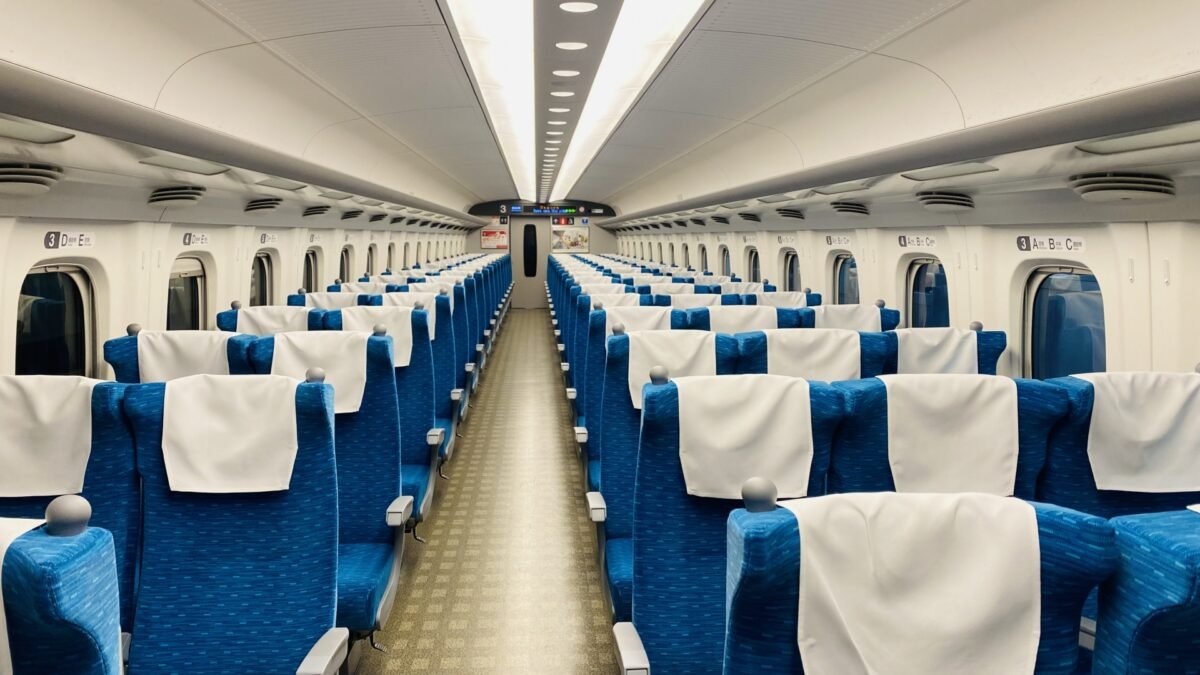

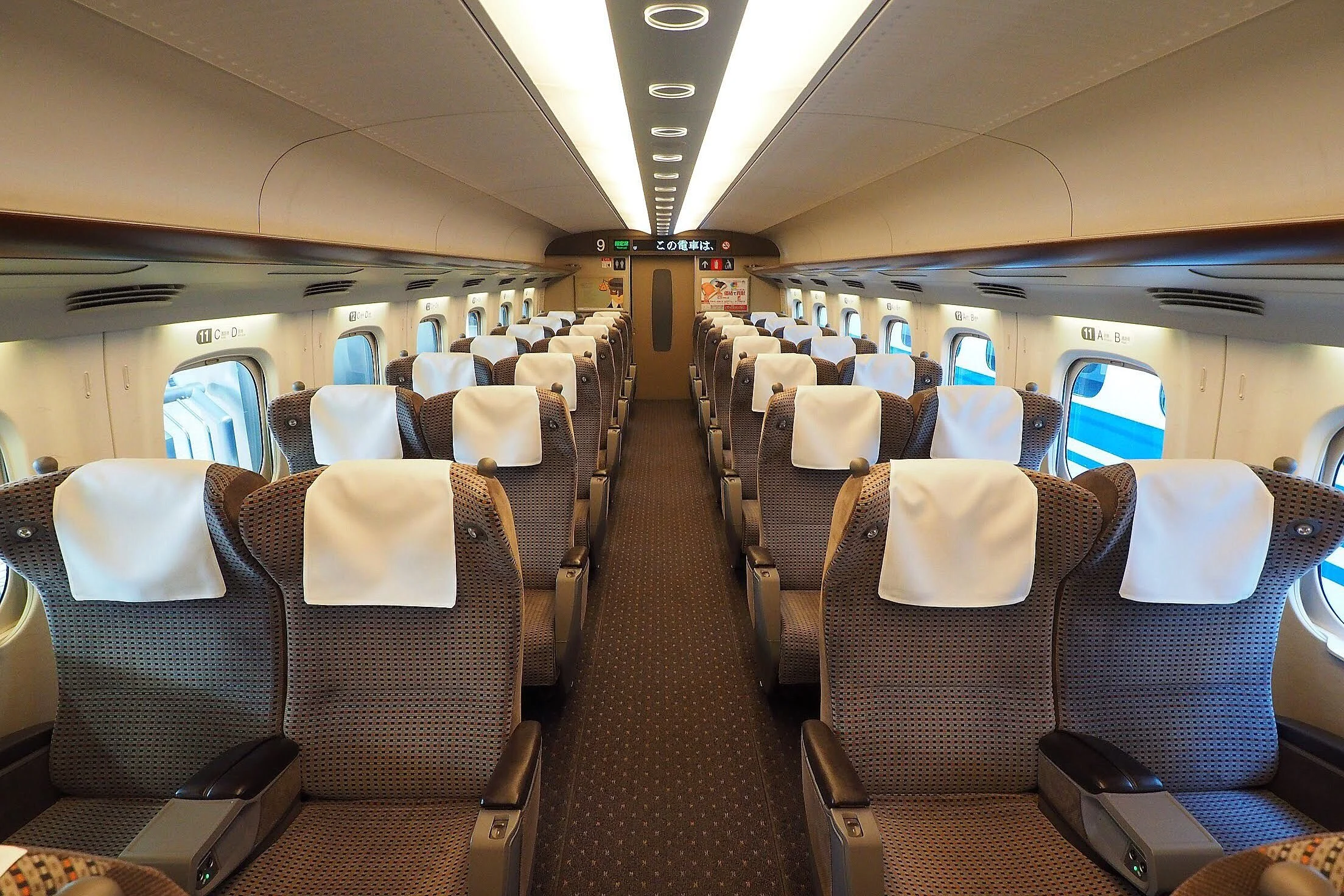

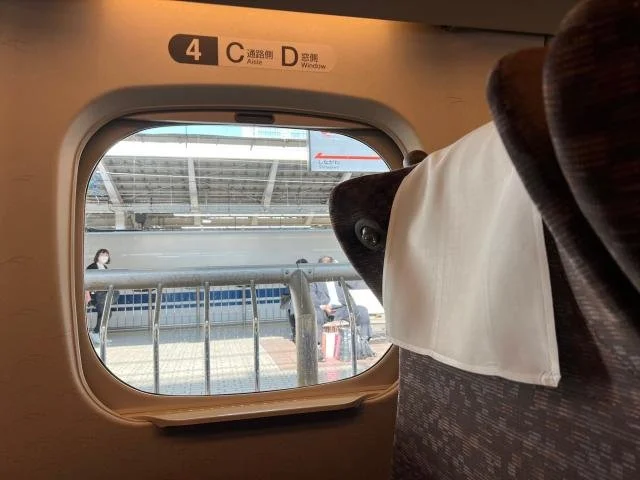

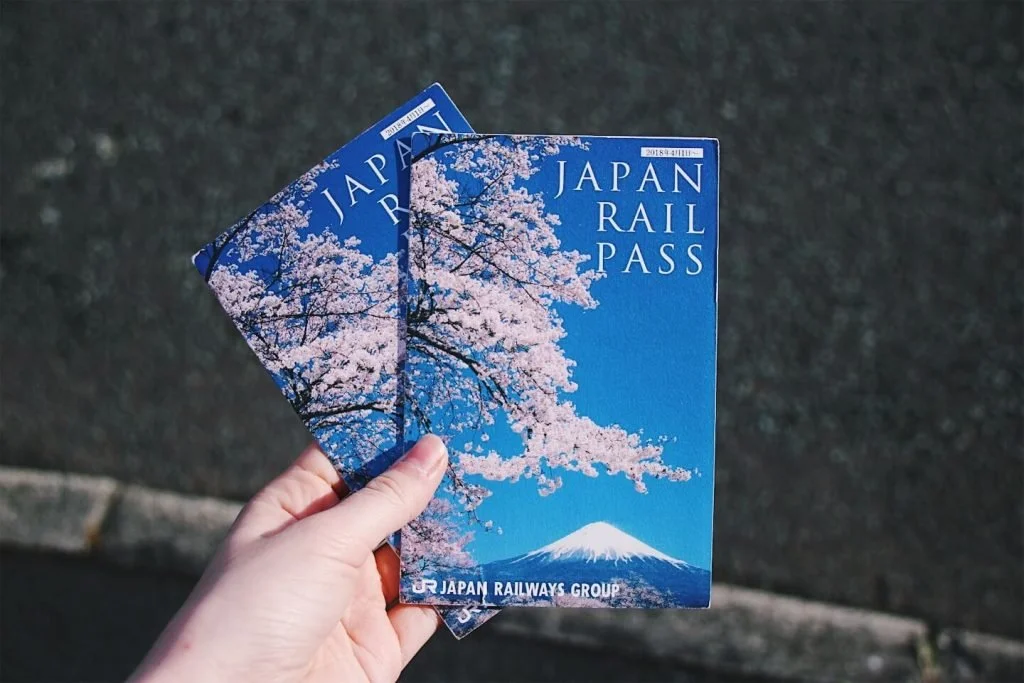

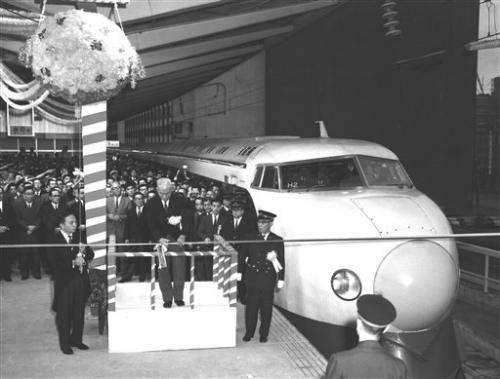




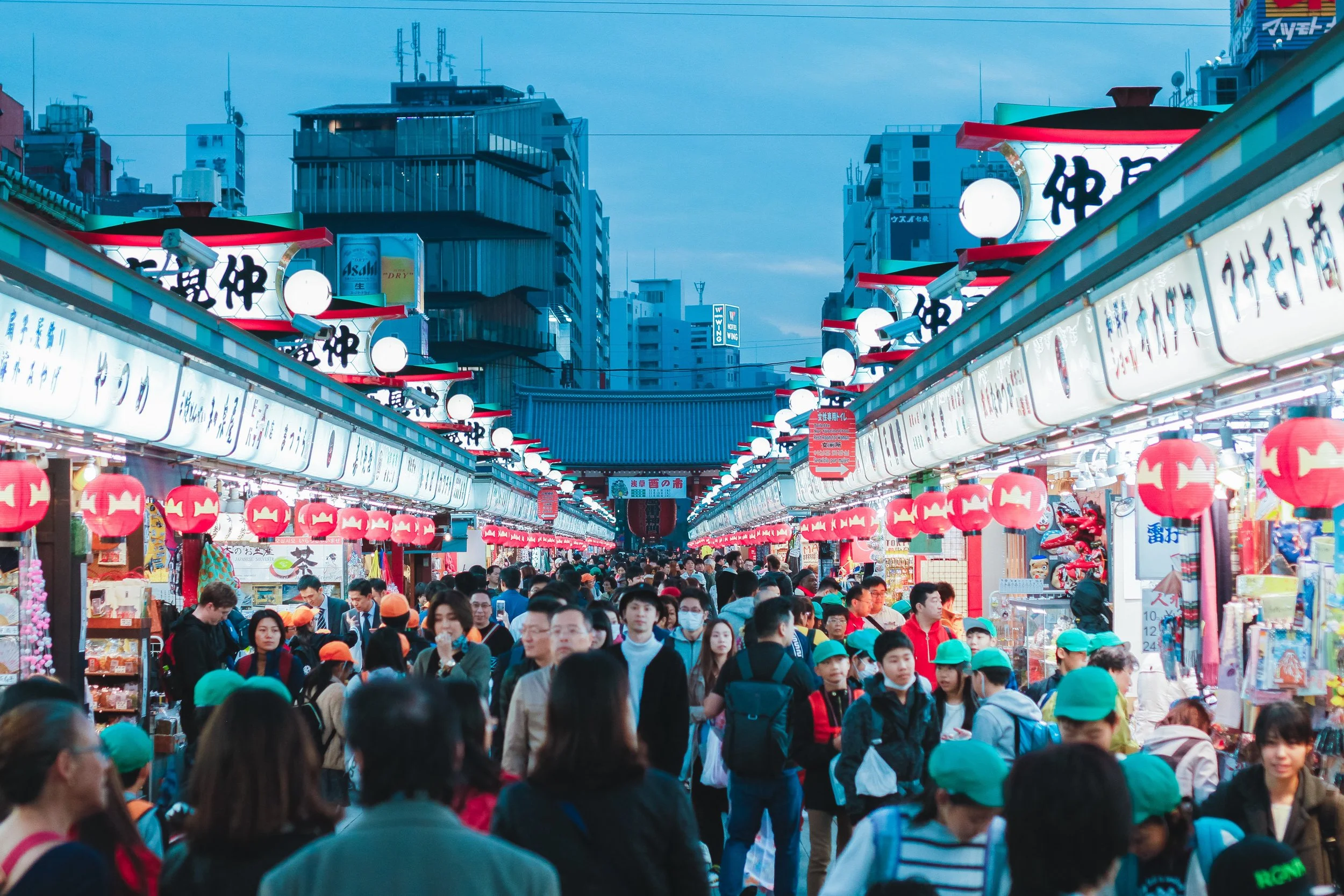
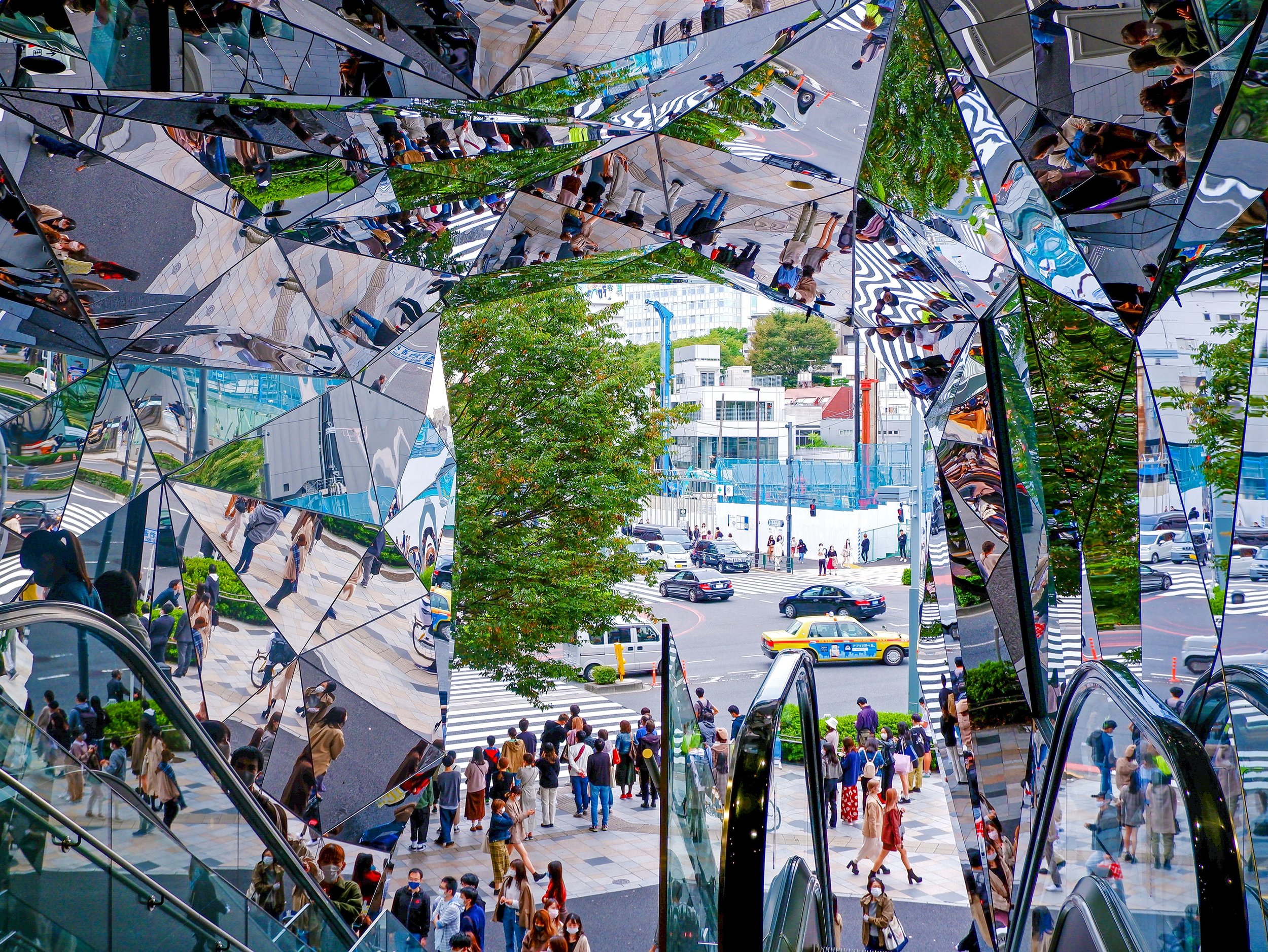
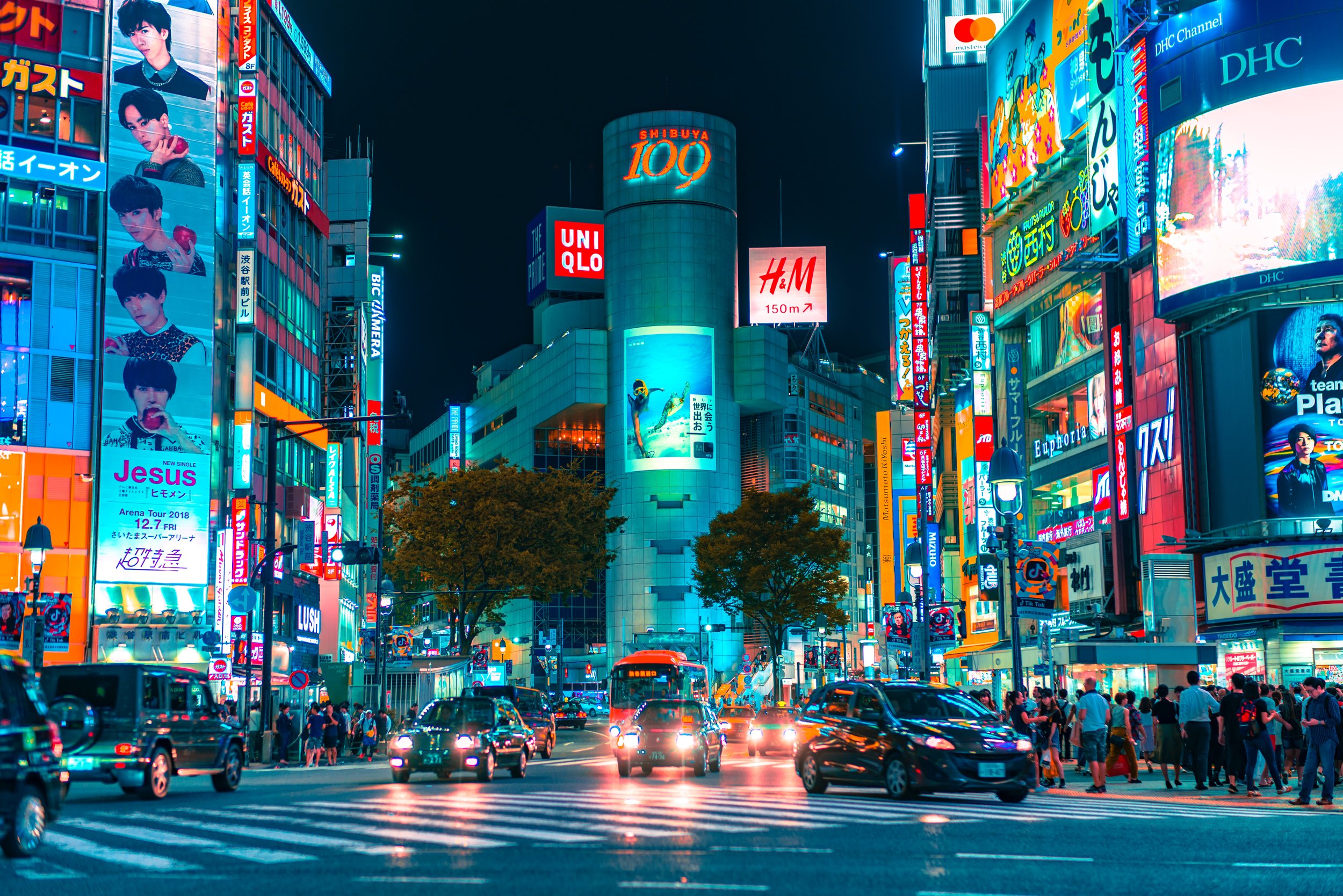
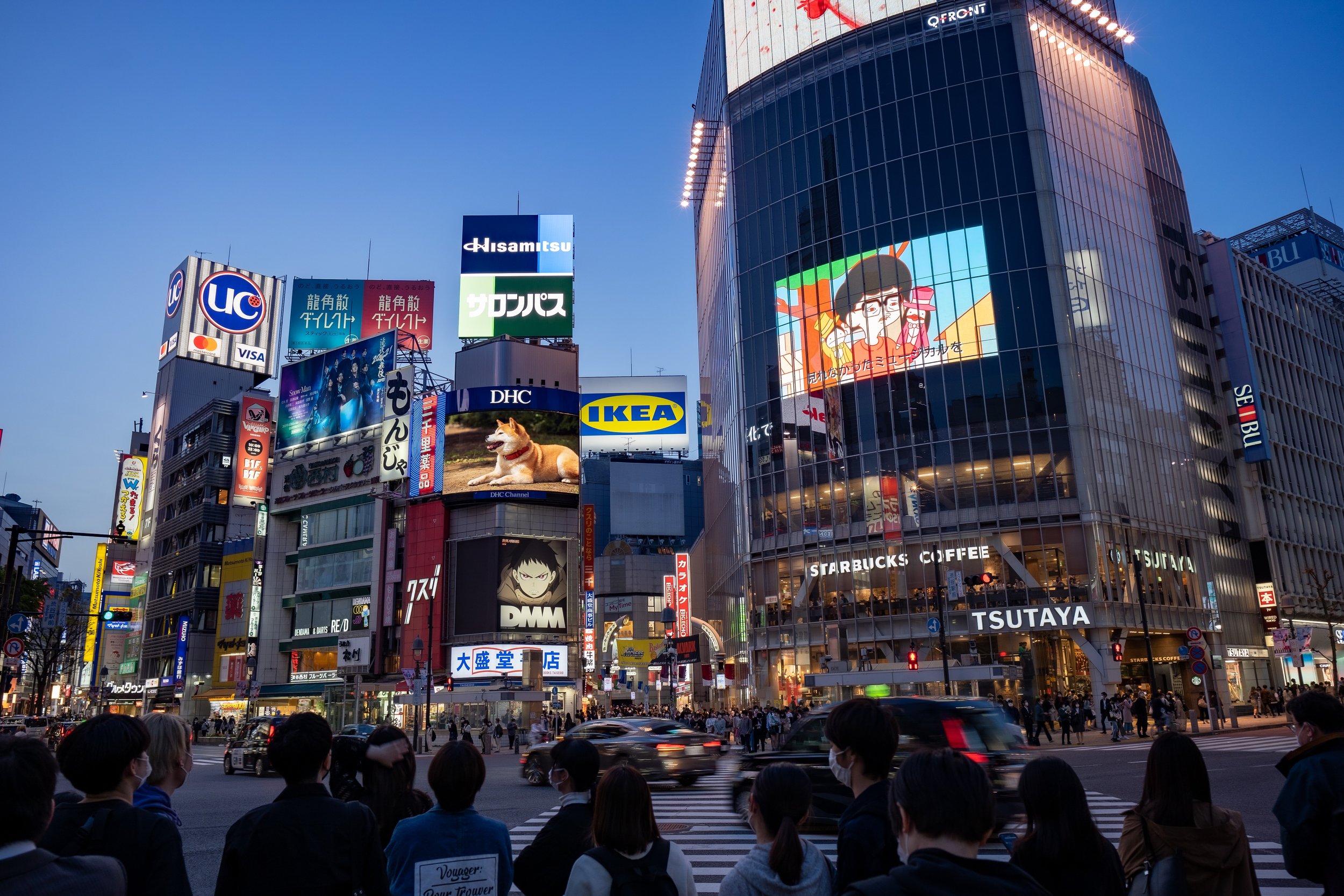
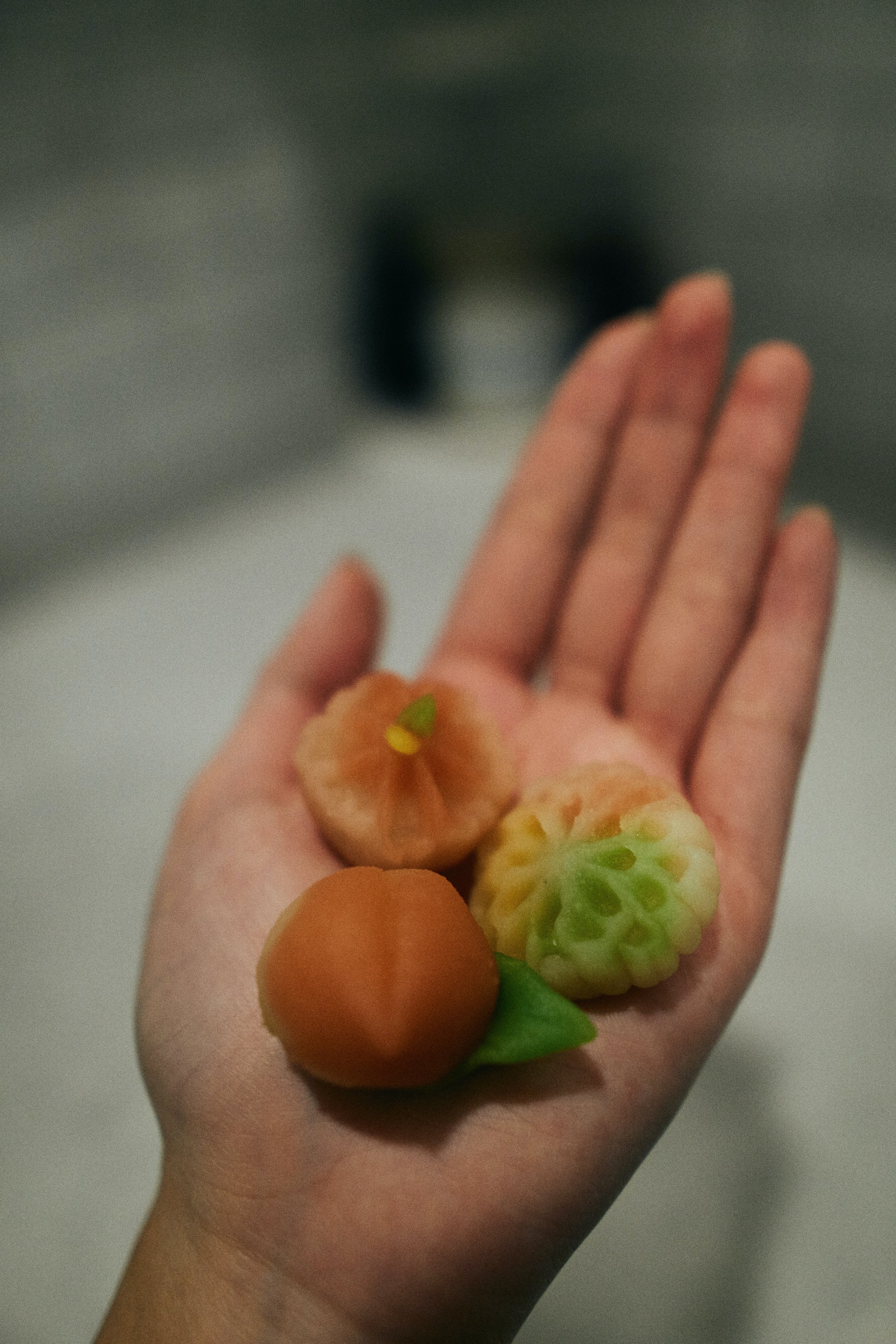

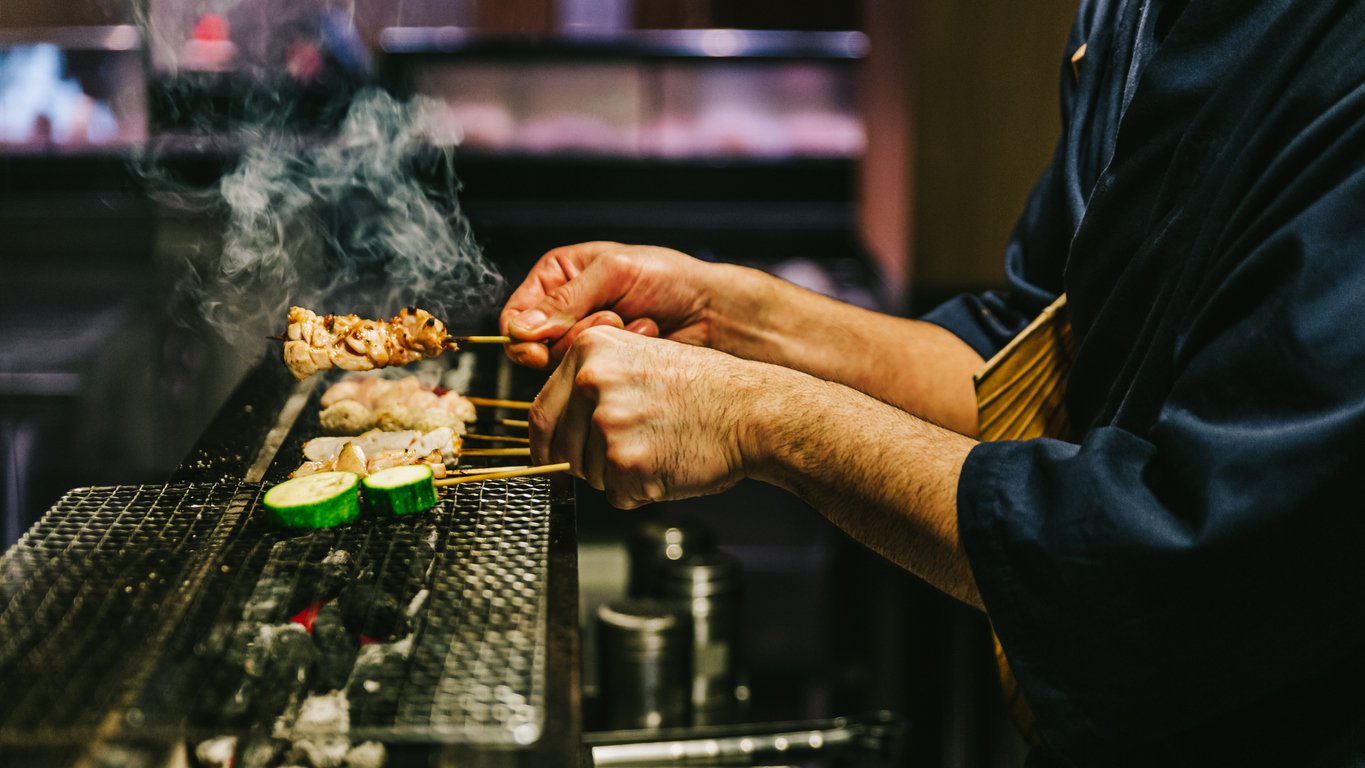
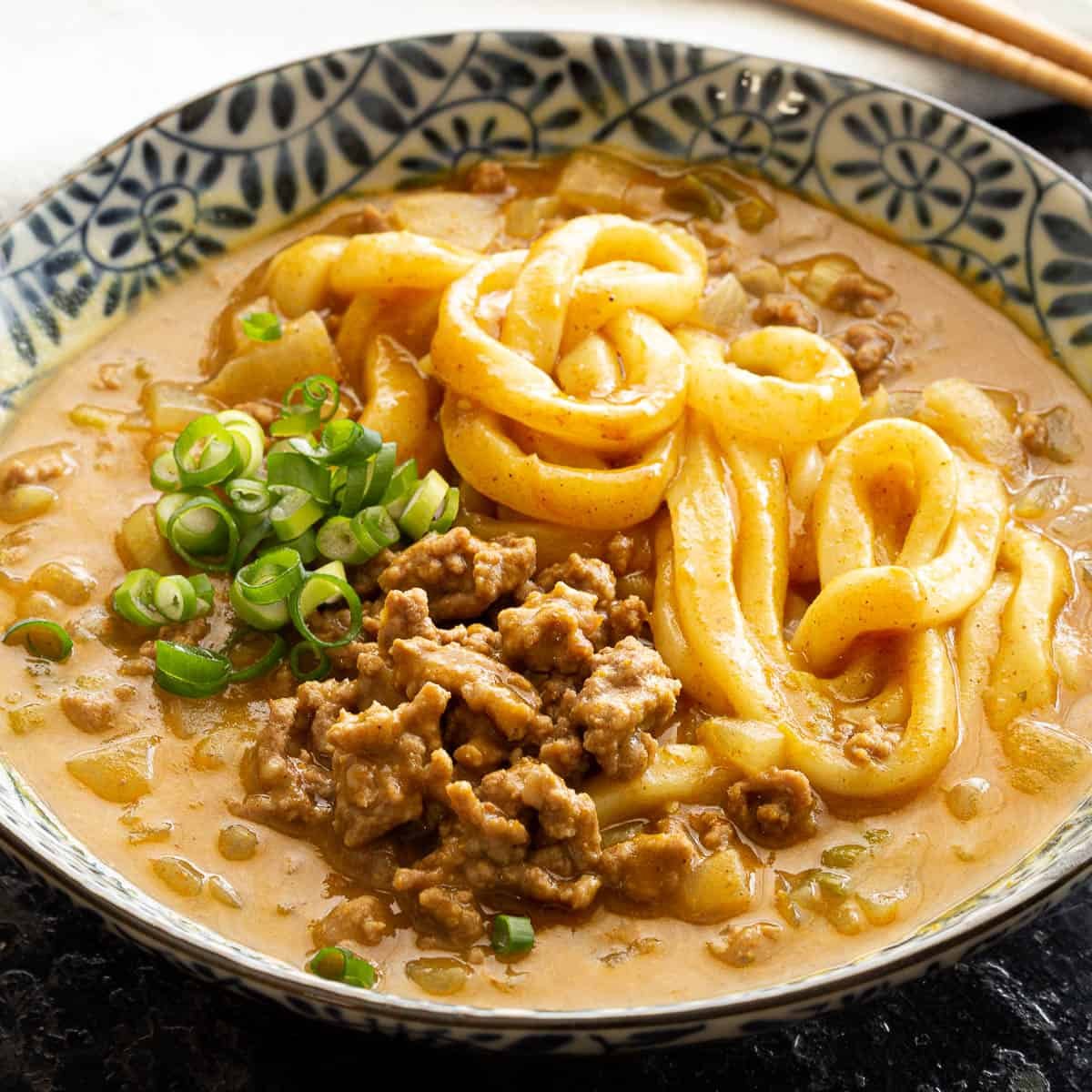




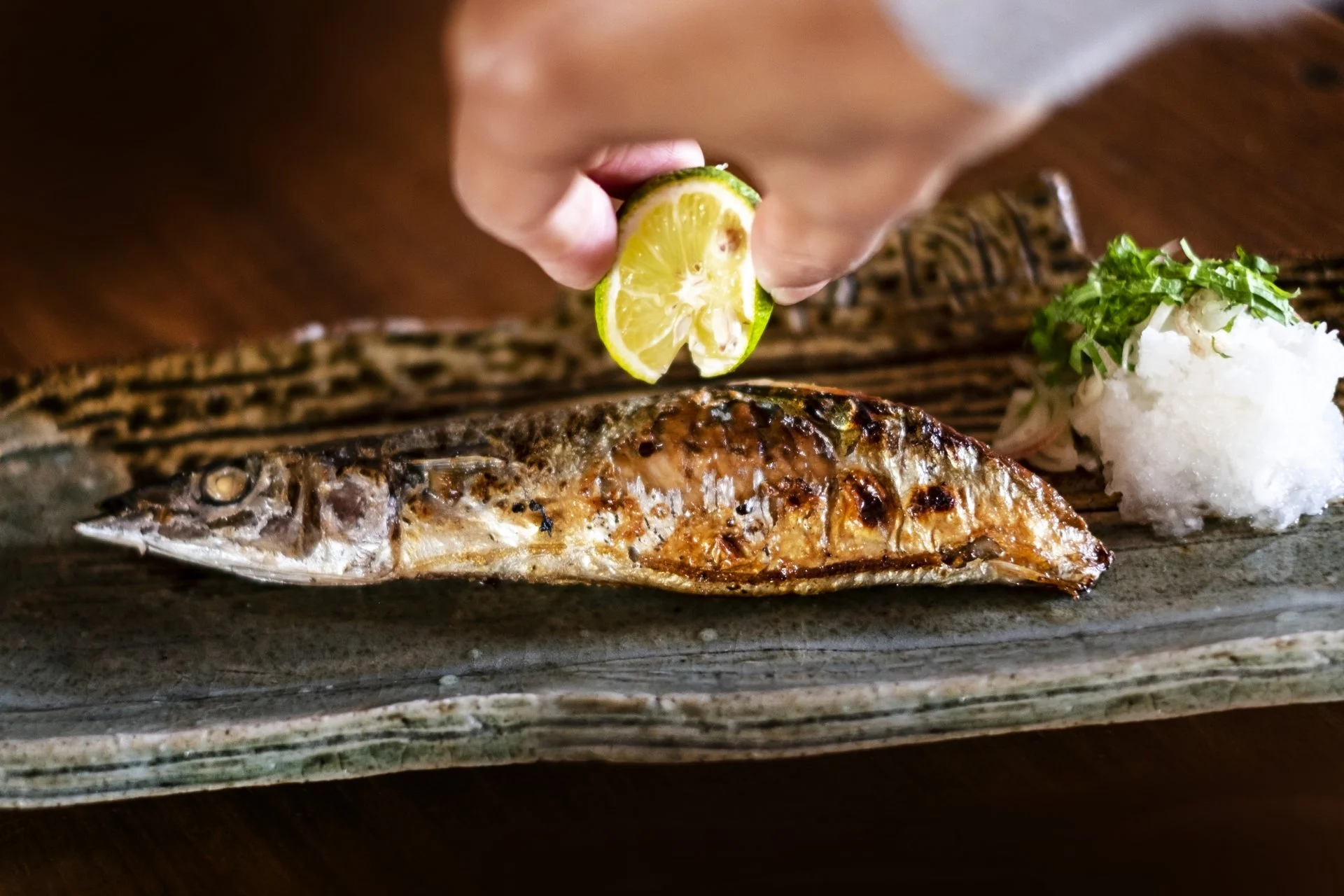




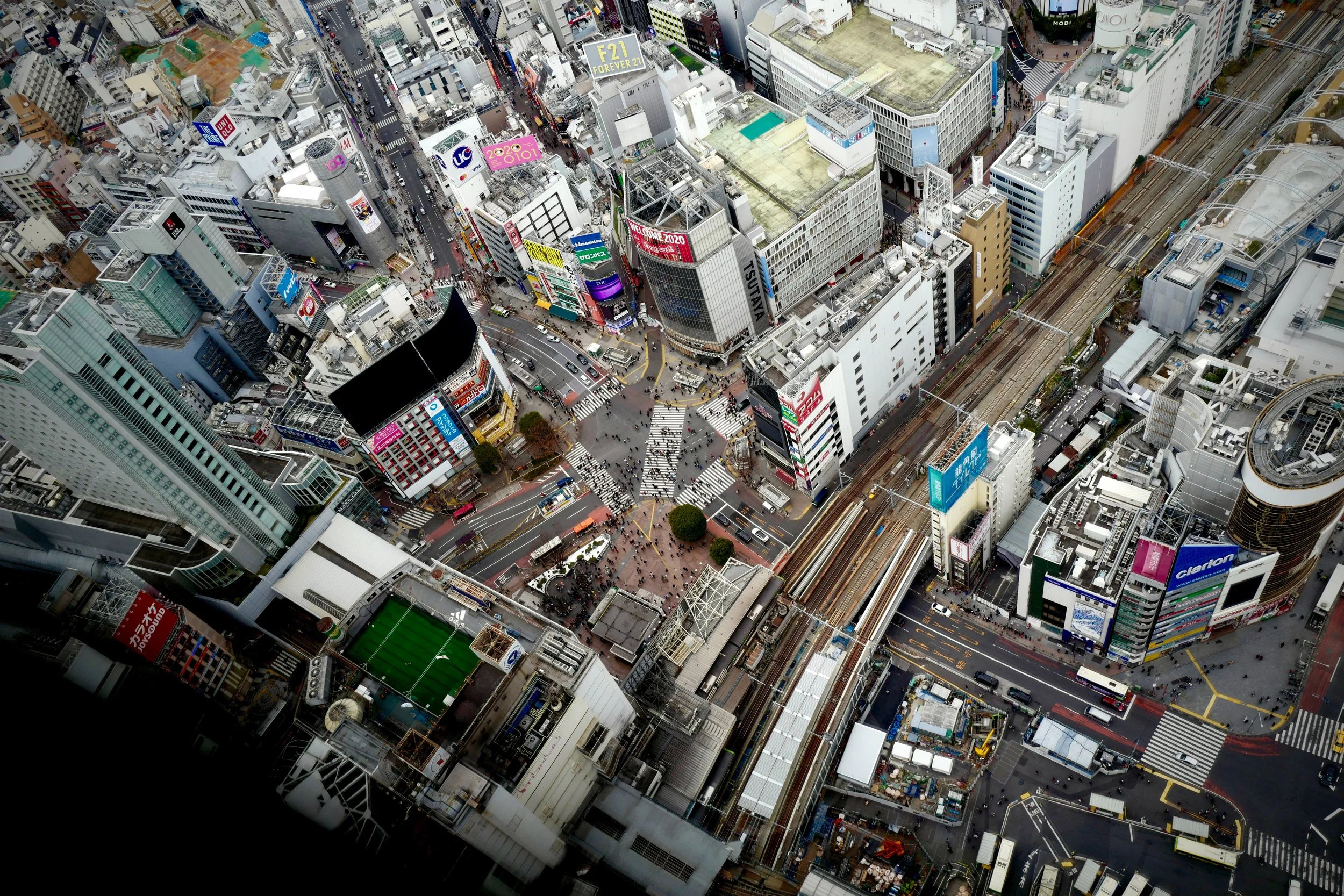




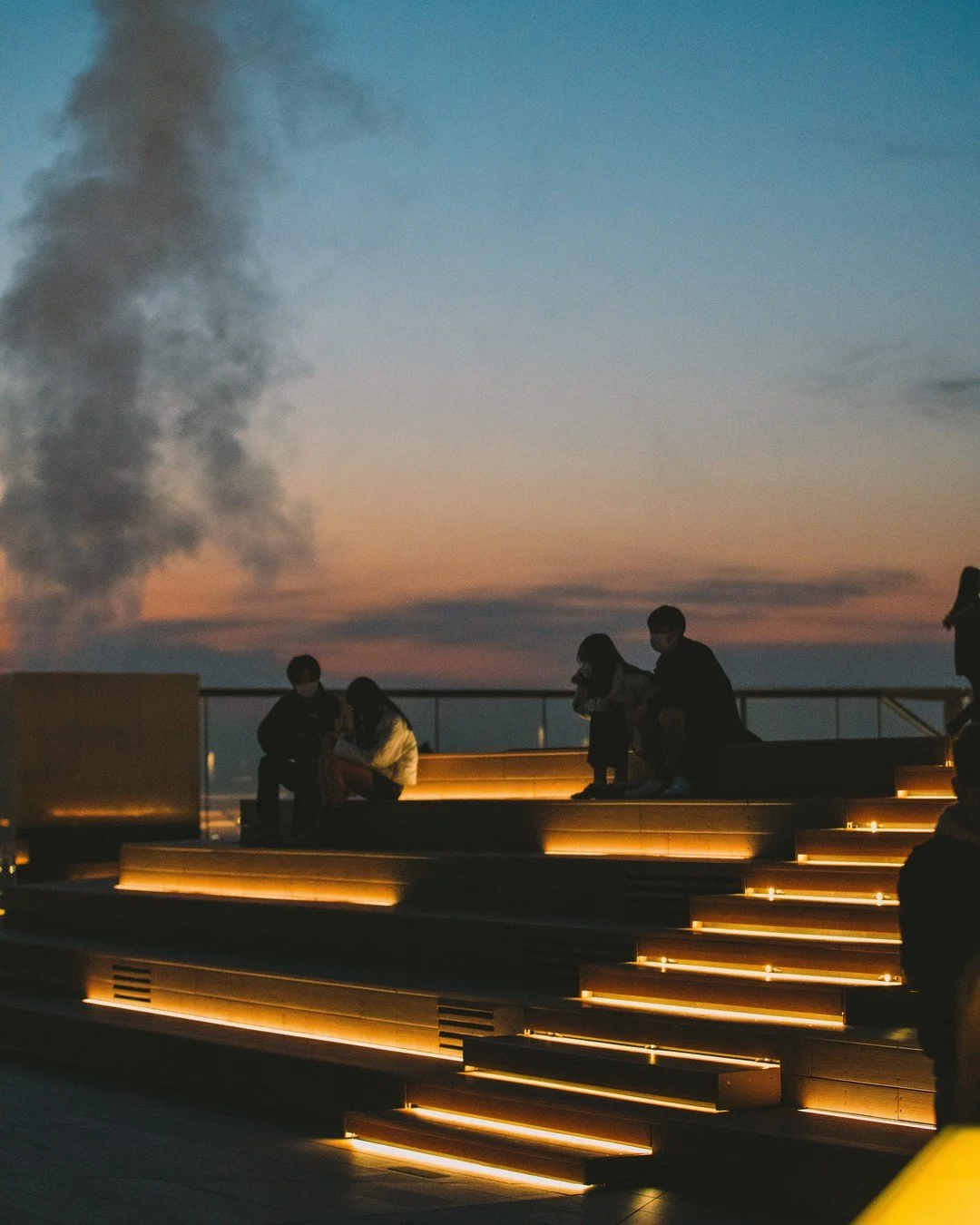
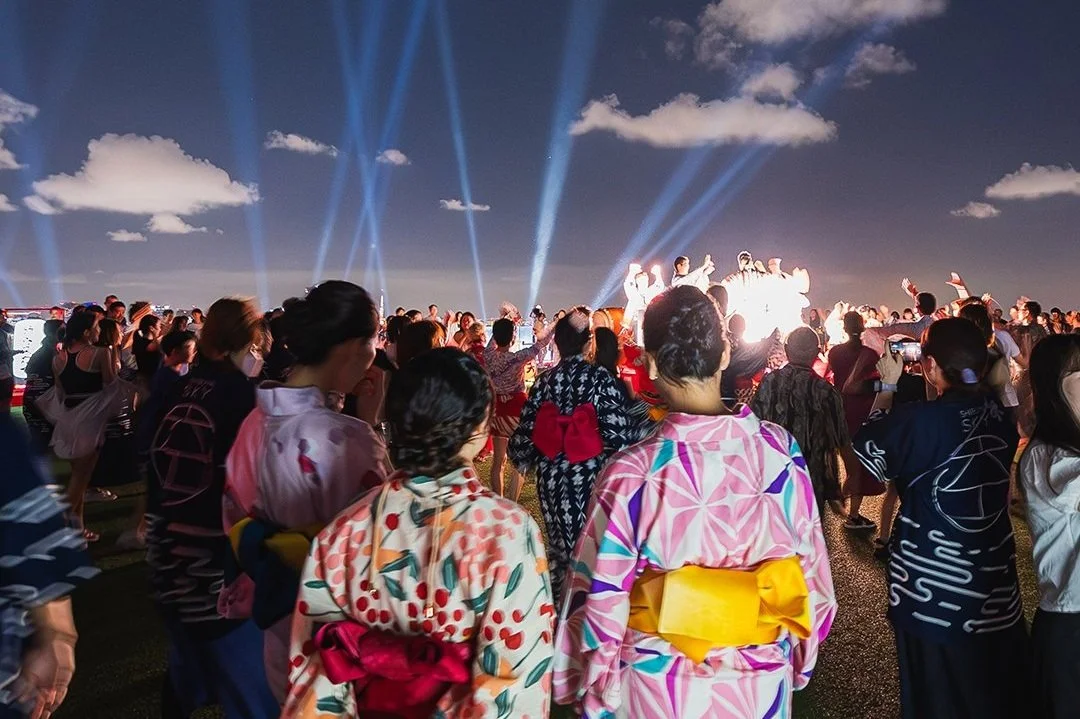


















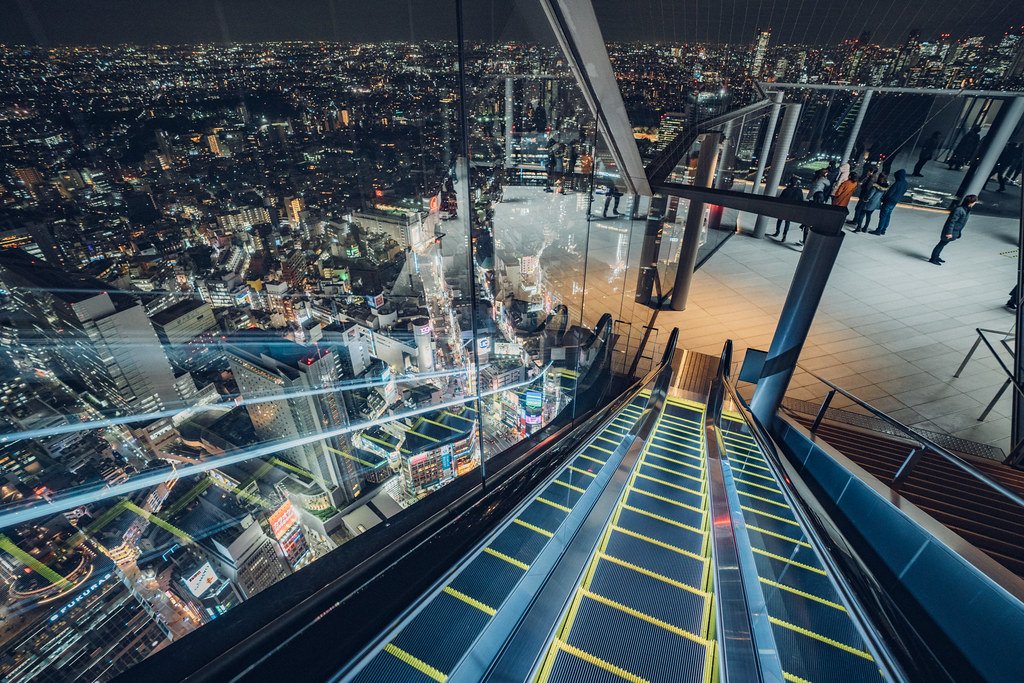




![SHOPS TO VISIT IN AKIHABARA [4 RECOMMENDATIONS FROM A TOKYO TOUR GUIDE]](https://images.squarespace-cdn.com/content/v1/5d3ee66abacfa00001df6854/1688969326850-TN7SNA01O3BNXMKO9H8P/image-asset.jpeg)


